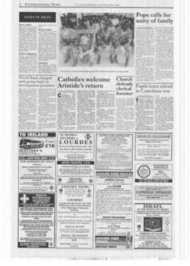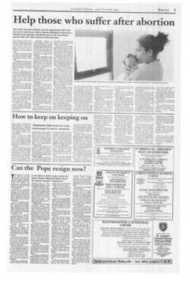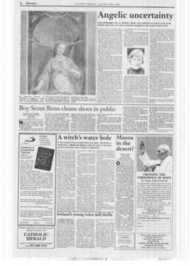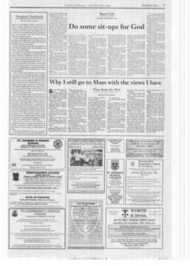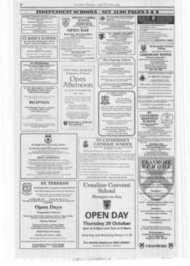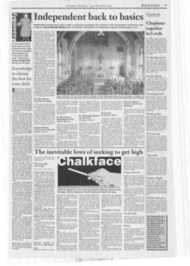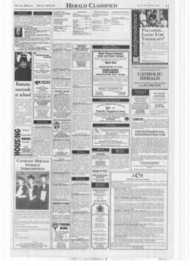Page 6, 14th October 1994
Page 6
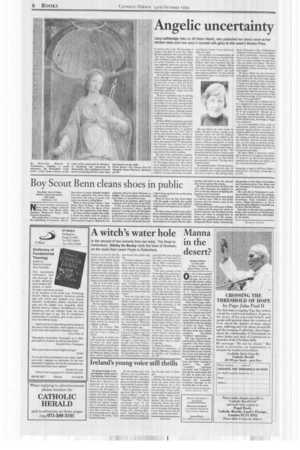
Report an error
Noticed an error on this page?If you've noticed an error in this article please click here to report it.
Tags
Share
Related articles
Making Tracks On The Path Pilgrims' Way To Canterbury
Seven Ages Of Shirley
Private Face Of Tutu
A Surrey Parish The Story Of Farnham
A Surrey Parish The Story Of Farnham
A witch's water hole
In the second of two extracts from her book, 'The Road to Canterbury', Shirley Du Boulay visits the town of Farnham, on the route from Lower Froyle to Puttenham.
FARNHAM IS ONE OF the few towns directly on the Old Road, which seldom passes through settlements. Travellers sought dry going underfoot, while settlements, built after the roads were first etched across the countryside, needed water and tended to arise close to springs, usually found to the south of the Way.
The lie of the hills round Farnham has given it an important position at the convergence of roads, most relevantly for us being that here the Pilgrims' Way from Winchester joins the Harrow Way from Stonehenge.
For thousands of years travellers reaching Farnham would have been able to determine the broad contours of the road ahead with confidence, for a ridge of chalk hills offers the traveller a route from which he would be unlikely to deviate.
First the Downs' Way would lead us to Canterbury, and on, if we so chose, to Dover.
But before we follow the road along the escarpment, we must do what many pilgrims before us would have done, drop downriver for a mile to visit Saint Mary's Well and Waverley Abbey, another place where pilgrims could have found a free night's lodging.
Christian pilgrims would presumably have visited Saint Mary's Well for its water rather than for its associations, for the small cave where the stream joins the river was the home of Mother Ludlum, reputedly a witch.
It was once a hospitable place. Travellers could relax on seats beside the cave and drink from little iron cups, fastened by chains beside the stream.
These are long gone, but the great caudrtm in which Mother Ludlum used to brew magic potions can still be seen in Frensham church. She was apparently a kindly lady, willing to lend her vessels for local weddings and festivities.
I wondered what the monks felt about their neighbour as we approached Waverley Abbey and walked around the carefully tended ruins.
It was the first Cistercian house in England and was founded in 1128 by William Giffard of Winchester, who brought a small group of monks over from France. Halfway between Winchester and London it was a strategic siting and it grew fast; in just 50 years there were 70 monks and 120 lay brothers. It pros pered for 400 years, though it had fallen on hard times by the time it was destroyed by
Henry commissioners in 1536, when it was valued at just £196.
The stone remains of the Cistercian Abbey, glowing in the sunlight against the river bank, are beautiful in the way ruins so often are, and the first romantic impression was enhanced when I discovered the names of the meadows. One, to the west of the Abbey, is still called the Saffron Beds, from the time that the monks grew the saffron crocus there; the other, where the monks took their recreation, is still called the Parlour Field.
The Cistercians, or White Monks, tried to observe a stricter interpretation of the Benedictine rule and lived in puritanical simplicity, earning the praise ofthe contemporary historian William of Malmesbury. "These monks" he wrote, "have the surest road to heaven." Surely these stones must once have been the homes of monks leading gentle pious lives in idyllic conditions.
f) Shirley Du Boulay.
The Road to Canterbury A Modern Pilgrimage, is published by Hodder and Stoughton, I 5.99
blog comments powered by Disqus



